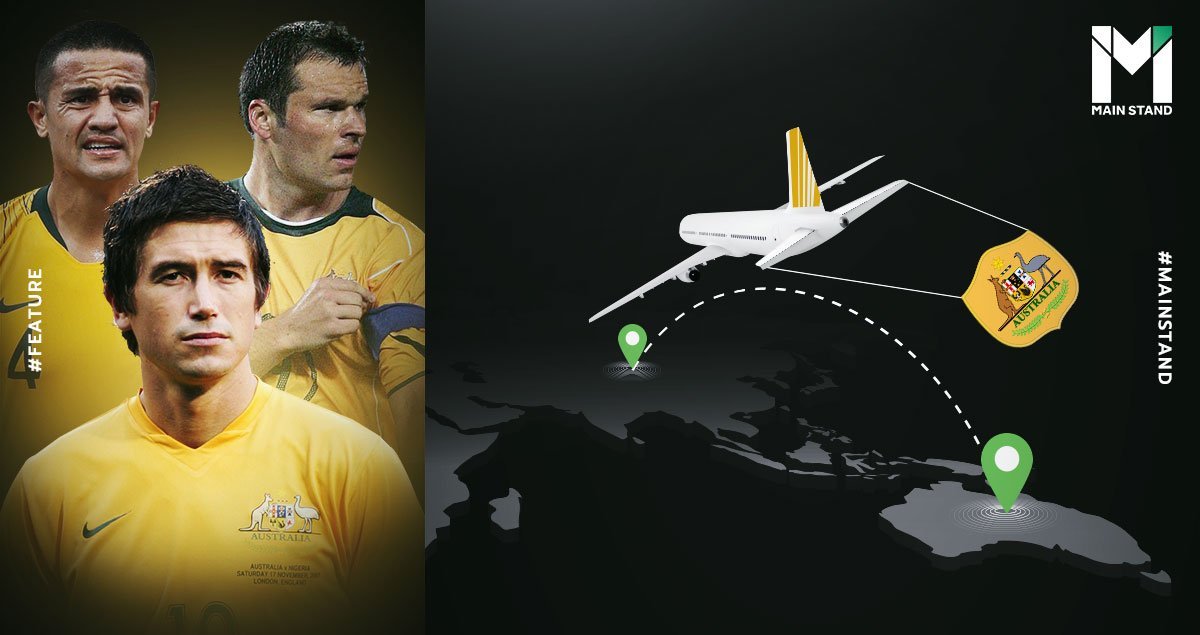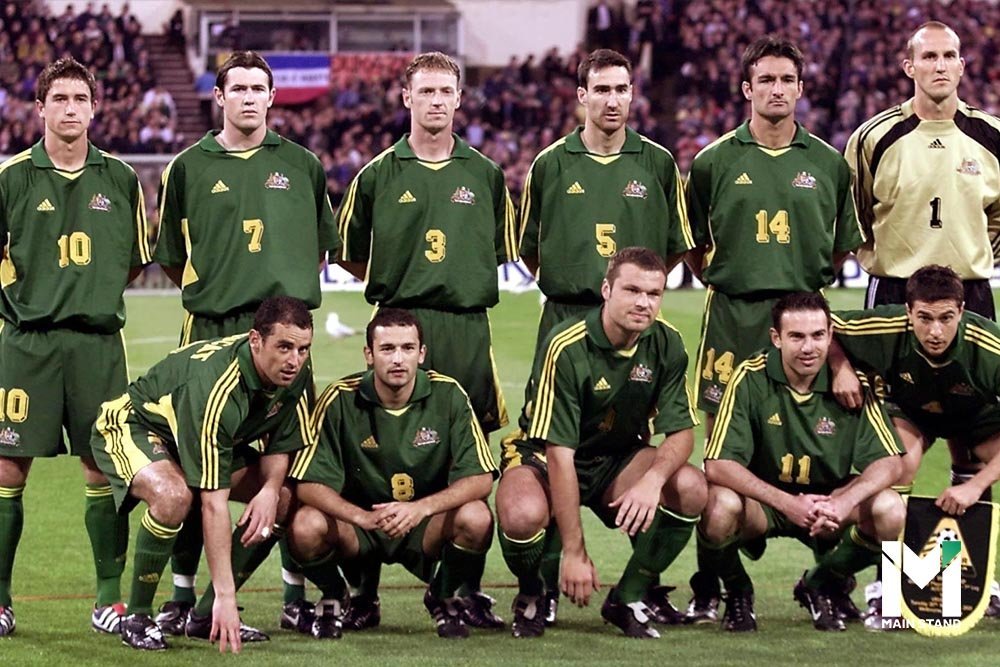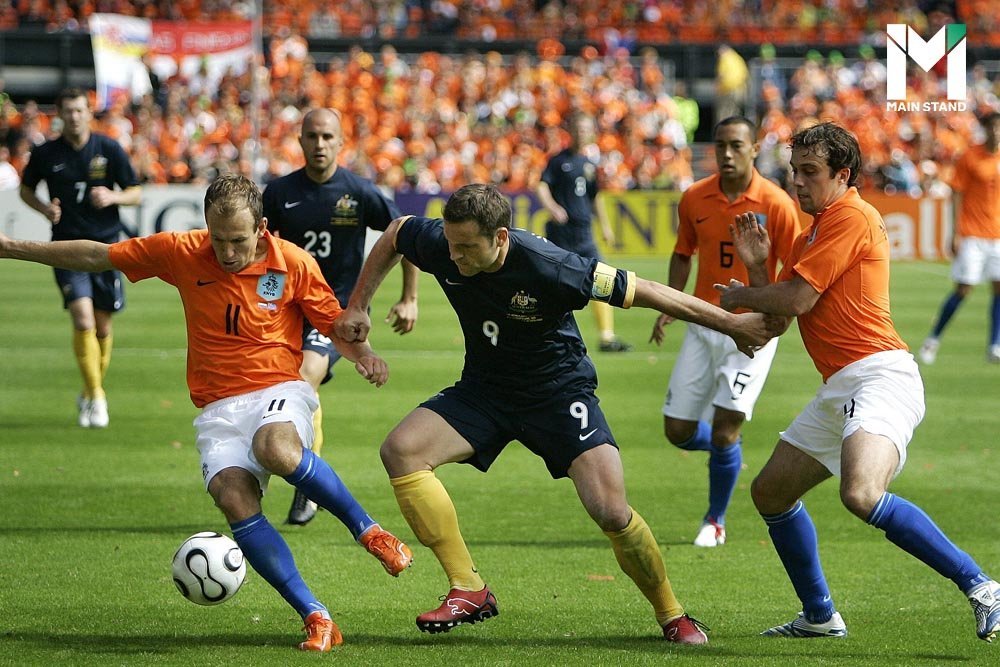
“Is Australia a part of Asia?”
The question is commonly raised when Australia qualify for the World Cup via the Asian Football Confederation (AFC) route.
Main Stand uncovers why and how the Socceroos joined Asia to become one of the continent’s most dominant forces.
The sad truth about the Oceanic qualifiers
The most profound disappointment was when the Australian team defeated all their opponents in the Oceania Football Confederation (OFC) and were not guaranteed a spot in the quadrennial FIFA World Cup.
Since the Oceania zone only receives half a quota (0.5) for the World Cup. This means its champion doesn’t receive an automatic bid to the final round and instead has to compete in the inter-continental playoffs.

Simply put, continental championships do not guarantee a spot in the tournament. They’re required to compete in an additional round against the fifth-ranked South American country in the playoffs.
The fifth-place countries usually range from Uruguay, Chile, Peru and Ecuador.
More often than not, the Latin American sides prove too strong for Australia.
After appearing in the 1974 World Cup in West Germany, the Socceroos missed out on seven-straight tournaments.
Whether losing in a two-legged inter-continental match or suffering a shock defeat to neighbors New Zealand, staying in the Oceania zone only left their dreams of reaching the World Cup in tatters.
"Even the best squad didn't manage to steer our team into the World Cup,” said an Australian journalist in 2002.

The most talented national players in years, indeed, weren’t good enough to take Australia to the promised land.
Their English-based players, such as Middlesbrough's Mark Schwarzer, Blackburn's and Leeds United's Harry Kewell and Mark Viduka, were often outmatched by Latin American teams.
One of Australia’s most heartbreaking defeats was in the 2002 intern-continental playoffs, bowing out after a 3-1 defeat at the hands of Uruguay.
Repeated losses to South American rivals left Football Australia and all Australian fans in despair.
Is it an easy move?
The loss to Uruguay in the 2002 World Cup playoff urged Australia to switch to another zone. With the best national squad, they viewed a playoff against South American rivals, including the giants such as Brazil and Argentina, as a foreboding about their failure to shine on the World Cup stage.
The move took place in 2005. As a result, Australia resigned from the Oceanic zone to the Asian continent under the Asian Football Confederation (AFC), approved by football's world governing body, Fédération Internationale de Football Association (FIFA).

Believe it or not, the move came to fruition with no objection.
According to FIFA's regulations, it is permissible for a confederation that belongs geographically to one continent to move to another. Therefore, in the first stage, Australia submitted a request to FIFA.
Within a year, the FIFA executive committee approved the move. Then FIFA president Sepp Blatter revealed that Australia's move from Oceania to Asia is a positive sign as the Oceanic zone would be more competitive.
Besides, Australia could help strengthen Asian football, contributing to more competitive national and continental games. Based on the above, FIFA agreed to the move.

For a country to be granted membership to an association that belongs geographically to another continent, it must meet the following criteria:
1. FIFA approves the move.
2. There is no objection from countries in the zone.
3. The expected region endorses the motion.
Australia passed all three and guaranteed their spot to compete in the AFC.
Socceroos reaping the fruits of their switch
Apart from this year, where they qualified through the inter-continental playoff, statistics show that Australia have qualified for every World Cup (2006, 2010, 2014, 2018, and 2022) since moving to play under the AFC.

Although many Asian countries can't help but question, "Why did we agree to Australia's move?"
The arrival of Australia scuppers Asian countries' chances to reach the World Cup.
But the advantages they bring to the continent should also be considered.

Australia's move to Asia allows Asian countries to compete against footballers whose physiques are the same size as European players with good tactics. This can result in Asian players improving themselves to be on a skilled players' par.
The arrival of Australia in the Asian continent has not only promoted Asia's football image but also motivated nations to pick up the pace to improve their football standards to book their tickets to the World Cup.
Sources:
https://www.reddit.com/r/Aleague/comments/1xeq51/why_was_australia_moved_from_the_oceania/
https://en.wikipedia.org/wiki/Australia_at_the_FIFA_World_Cup
https://www.chinadaily.com.cn/english/doc/2005-03/24/content_427715.htm
https://www.quora.com/Why-does-Australia-take-part-in-the-AFC-Asian-Cup-when-it-s-not-a-part-of-Asia
https://www.thesun.co.uk/sport/football/4596734/why-australia-play-football-in-asia-world-cup-fifa/
https://www.smh.com.au/sport/soccer/australia-get-all-clear-to-join-asian-group-20050324-gdkzq2.html






